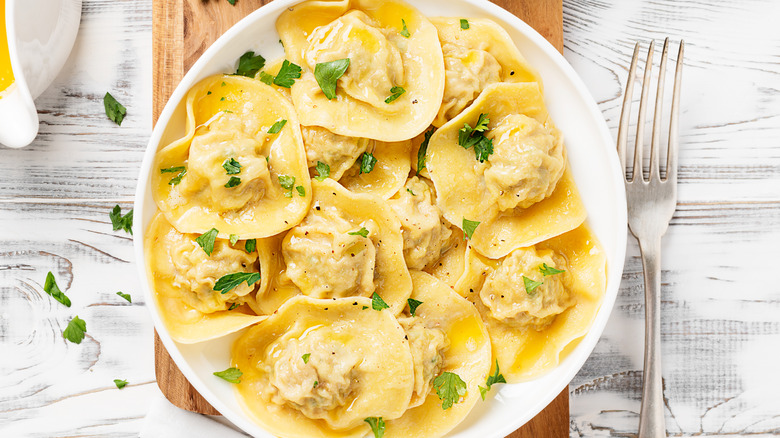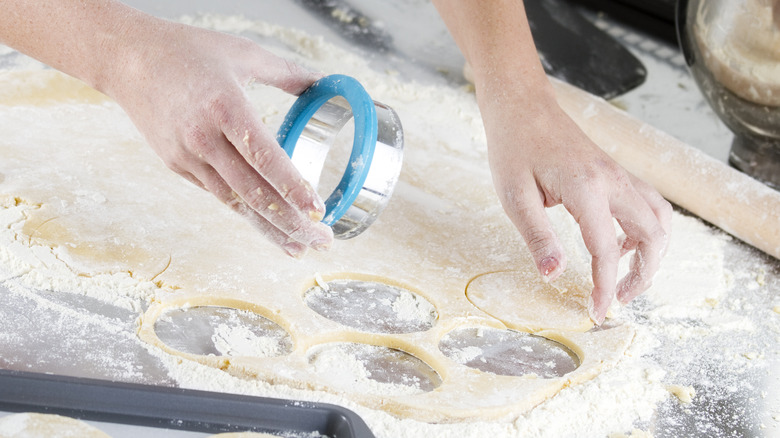The Baking Tool That Will Cut Ravioli Without A Fancy Mold
Making ravioli from scratch is an involved process. You have to make the dough, roll and stretch it out into a long sheet, create a filling, and then do your best to parcel out as many individual ravioli as possible from your sheet. This last step can be the most time-consuming part of the whole process, depending on how you go about it.
Perhaps the simplest way to form the pasta is by spacing out the filling along the length of one half of a dough sheet, folding the other half over, pressing around the filling to create an airtight seal, and then cutting out squares, circles, or half-moon shapes. Many will reach for a ravioli tray mold, but unless you're selling them or trying to feed an army, there's not much need for such a specified tool, particularly when a spiked ravioli stamp does essentially the same thing and can fit inside a drawer.
Of course, you don't need a ravioli mold or stamp to cut out your pasta, as there are myriad other tools that can get the job done just as well. Two of the simplest and most effective are the pasta cutter and pasta crimper. Though you may not get a perfectly shaped ravioli every time, that just adds to their rustic, homemade charm.
But if you care more about uniform shape than crinkly edges, a circular pastry or cookie cutter works just as well as any fancy ravioli mold.
Different shape, same flavor
Circular dough cutters are often used for cutting biscuits, bread rolls, or cookies but can easily be used to shape ravioli too. Because of the cutter's shape, the ravioli you get will be circular instead of square. It is best to use a cutter that measures at least three to four inches across. Anything skinnier will make a circle too small to fit a good amount of filling in the center while leaving enough room around the edges to seal the ravioli properly. There are two ways you can go about shaping ravioli with these cutters. You can cut out individual circles, spoon the filling onto one circle, then cover with another, and seal around the edges together using your fingers or a fork. You could also do the fold-over method as described earlier.
Don't feel obliged to stick with traditional shapes, either. If you've got a fun set of cookie cutters, feel free to experiment with those and see what shapes you (or your kids) enjoy making and eating. Just be careful that they're big enough to work around the filling!

